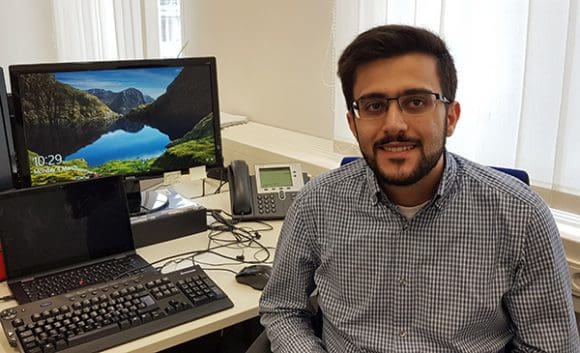By Davit Stepanyan, PhD candidate and research associate at Humboldt University of Berlin, International Agricultural Trade and Development Group and 2019 IIASA Young Scientists Summer Program (YSSP) Award Finalist.
Participating in the YSSP at IIASA was the biggest boost to my scientific career and has shifted my research to a whole new level. IIASA provides a perfect research environment, especially for young researchers who are at the beginning of their career paths and helps to shape and integrate their scientific ideas and discoveries into the global research community. Being surrounded by leading scientists in the field of systems analysis who were open to discuss my ideas and who encouraged me to look at my own research from different angles was the most important push during my PhD studies. Having the work I did at IIASA recognized with an Honorable Mention in the 2019 YSSP Awards has motivated me to continue digging deeper into the world of systems analysis and to pursue new challenges.

© Davit Stepanyan
Although my background is in economics, mathematics has always been my passion. When I started my PhD studies, I decided to combine these two disciplines by taking on the challenge of developing an efficient method of quantifying uncertainties in large-scale economic simulation models, and so drastically reduce the need and cost of big data computers and data management.
The discourse on uncertainty has always been central to many fields of science from cosmology to economics. In our daily lives when making decisions we also consider uncertainty, even if subconsciously: We will often ask ourselves questions like “What if…?”, “What is the chance of…?” etc. These questions and their answers are also crucial to systems analysis since the final goal is to represent our objectives in models as close to reality as possible.
I applied for the YSSP during my third year of PhD research. I had reached the stage where I had developed the theoretical framework for my method, and it was the time to test it on well-established large-scale simulation models. The IIASA Global Biosphere Management Model (GLOBIOM), is a simulation model with global coverage: It is the perfect example of a large-scale simulation model that has faced difficulties applying burdensome uncertainty quantification techniques (e.g. Monte Carlo or quasi-Monte Carlo).
The results from GLOBIOM have been very successful; my proposed method was able to produce high-quality results using only about 4% of the computer and data storage capacities of the above-mentioned existing methods. Since my stay at IIASA, I have successfully applied my proposed method to two other large-scale simulation models. These results are in the process of becoming a scientific publication and hopefully will benefit many other users of large-scale simulation models.
Looking forward, despite computer capacities developing at high speed, in a time of ‘big data’ we can anticipate that simulation models will grow in size and scope to such an extent that more efficient methods will be required.
Note: This article gives the views of the author, and not the position of the Nexus blog, nor of the International Institute for Applied Systems Analysis.

You must be logged in to post a comment.